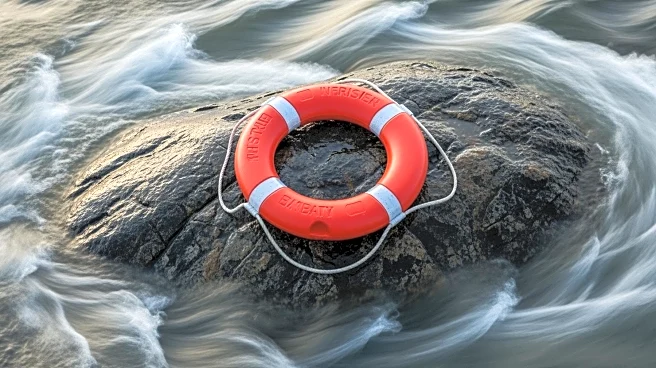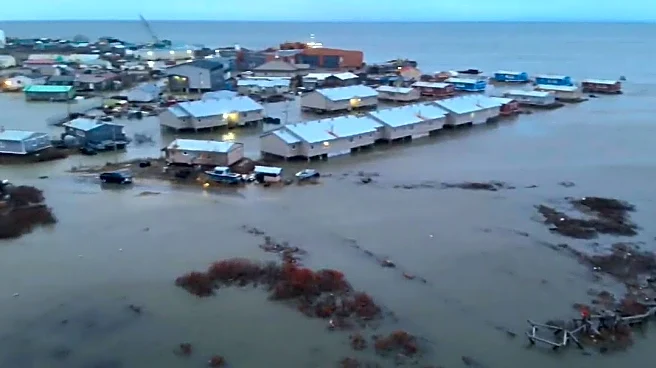What's Happening?
The Philippines is currently facing a dual natural disaster threat as Tropical Storm Fengshen approaches following a series of deadly earthquakes. Thousands of residents from the island of Catanduanes
have been evacuated due to the potential for coastal flooding. The provincial government has activated evacuation plans for high-risk areas, including coastal and low-lying communities. The storm is expected to bring heavy rainfall and moderate risk of coastal flooding, with gusts reaching up to 80 kilometers per hour.
Why It's Important?
The situation in the Philippines highlights the vulnerability of island nations to consecutive natural disasters, which can strain emergency response systems and resources. The evacuation of over 9,000 residents underscores the preparedness and resilience of the local government and communities. However, the compounded impact of earthquakes and a tropical storm could lead to significant humanitarian challenges, including displacement, infrastructure damage, and potential loss of life. This scenario serves as a critical reminder of the need for robust disaster preparedness and response strategies in regions prone to natural calamities.
What's Next?
As Tropical Storm Fengshen continues its approach, the focus will be on monitoring the storm's path and impact. The government and disaster response teams will likely remain on high alert to manage evacuations and provide aid to affected areas. International aid and support may be mobilized if the situation escalates. The effectiveness of the evacuation plans and the resilience of infrastructure will be tested in the coming days.













